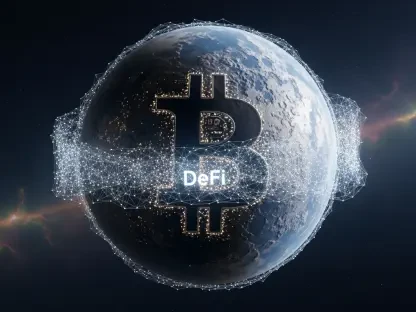Open banking is poised to revolutionize the financial sector, particularly the payment landscape. By leveraging open application programming interfaces (APIs), open banking facilitates seamless data exchange between banks, fintech companies, and other financial participants. This shift from traditional, siloed banking infrastructures to a more collaborative and innovative financial ecosystem is set to bring significant changes.
Understanding Open Banking
The Core of Open Banking
At its core, open banking is based on APIs, which promote the seamless transmission of data among banks, fintechs, and other stakeholders. This approach, sometimes termed “API-fueled finance,” fosters collaboration, drives innovation, and enables the creation of new services that benefit consumers. Open banking signifies a departure from vertical silos and legacy infrastructures, integrating data and cloud-based services, and creating a more open and decentralized system with the customer at the center. By ensuring that banks and other financial entities can communicate with each other seamlessly, open banking has the potential to reshape the entire financial sector and provide unprecedented opportunities for innovation.
Furthermore, by tearing down traditional silos, open banking empowers customers by putting them at the heart of the financial ecosystem. With APIs facilitating data sharing, financial institutions can now offer personalized products and services tailored to individual needs. Customers can enjoy a more seamless and interconnected experience, with their financial data accessible in real-time, leading to better financial decision-making. This shift drives the development of new business models and fosters competition in the sector, ultimately benefiting consumers through increased choices and improved services.
Benefits of Open Banking
Open banking offers numerous benefits, including enhanced security, cost efficiency, and improved user experiences. By enabling direct data exchange, it reduces the need for intermediaries, thereby lowering transaction costs and increasing transparency. Financial institutions can share information securely and efficiently, leading to better fraud detection and risk management. Additionally, by streamlining processes and reducing reliance on intermediaries, open banking minimizes costs for both businesses and consumers, resulting in more affordable financial services.
Moreover, open banking allows for the development of personalized financial services, tailored to individual customer needs, further enhancing the user experience. Customers can benefit from automated financial advice, budget tracking, and personalized product recommendations, all based on their unique financial profiles. Open banking also drives innovation by encouraging collaboration between traditional banks and fintech companies, leading to the creation of cutting-edge financial products and services. The increased competition within the industry fosters a dynamic and competitive market, ultimately benefiting consumers with better offerings and improved user experiences.
Implications for the Payment Landscape
Disrupting Traditional Payment Models
Traditional credit card transactions follow a four-party model with intermediary networks like Visa and Mastercard. These networks govern the channels connecting banks and customers, involving multiple intermediaries in each transaction. Open banking disrupts this model by enabling merchants to initiate payments directly from customers’ bank accounts, bypassing card networks. In this streamlined process, customers can utilize options like ‘Pay by Bank,’ authenticate through their banking apps, and authorize payments directly. This simplified process reduces costs for merchants and mitigates the friction associated with card payments.
By eliminating several intermediary steps, open banking allows for more direct and efficient payment processes. Merchants can benefit from lower transaction fees and faster settlement times, enhancing their cash flow and overall business operations. For consumers, the streamlined experience reduces the need for managing multiple payment methods and decreases the likelihood of failed transactions. The rise of open banking payments, especially in the e-commerce sector, presents a formidable challenge to traditional credit card networks and potentially reshapes the future of payment methods.
Co-existence with Traditional Payment Methods
While open banking payments present numerous advantages—including reduced costs, enhanced security, and improved user experiences—it is unlikely to entirely replace credit cards in the near future. Credit cards offer specific benefits such as access to credit, reward programs, and widespread global acceptance, contributing to their sustained relevance. The advantages of credit cards, such as the ability to borrow funds quickly or take advantage of reward programs, still hold significant value for consumers. For this reason, it is probable that open banking payments and traditional credit cards will coexist, each serving different transaction needs.
A probable evolutionary trajectory includes a gradual increase in open banking payment adoption, particularly in the e-commerce space, while credit cards persist for other transaction types. Open banking payments may become more prevalent for online shopping and bill payments due to their streamlined nature and cost efficiency. However, credit cards will likely continue to dominate for large purchases, travel, and payments requiring immediate access to credit. Over time, the balance between these payment methods will be influenced by consumer preference, technological advancements, and market trends, ultimately shaping a more diverse and flexible payment landscape.
Comparison with Direct Debits
Variable Recurring Payments (VRPs)
One promising open banking use case is variable recurring payments (VRPs). VRPs allow account holders to authorize service providers to make regular payments on their behalf, similar to direct debits. However, VRPs demonstrate a higher level of security and flexibility, as they are real-time and irrevocable while reducing mis-entry and fraud risks. Customers must consent to each transaction, ensuring that only authorized payments are made. This additional layer of security can protect both consumers and businesses from unauthorized or fraudulent transactions.
VRPs also provide a more adaptable option compared to traditional direct debits. They allow for variable payment amounts and frequencies, accommodating changing billing cycles or fluctuating subscription costs. For consumers, this flexibility can result in better budgeting and financial management, with transactions reflecting their actual usage and needs. For businesses, VRPs provide a reliable and secure method for collecting recurring payments, reducing the risk of missed payments or declined transactions and enhancing overall financial stability.
Potential to Replace Direct Debits
VRPs hold the potential to replace direct debits and credit card payments, especially for recurring transactions such as subscriptions, memberships, and bills. With their promise of real-time processing, enhanced security, and better user control, VRPs could revolutionize how recurring payments are managed. Despite their promising prospects, VRPs are not yet available in the European Union, and their widespread adoption faces hurdles including the need for consumer and merchant education on benefits and competitive pricing strategies. For VRPs to gain widespread acceptance, both consumers and businesses must be made aware of their advantages and see tangible benefits compared to traditional methods.
The adoption process also requires overcoming regulatory challenges and ensuring that VRPs are compatible with existing financial systems and infrastructure. Financial institutions must invest in educating their customers and merchants about the benefits of VRPs to encourage adoption. Moreover, competitive pricing and transparent fee structures can help make VRPs an attractive alternative to traditional payment methods. As awareness and adoption increase, VRPs have the potential to become the preferred method for recurring payments, driving efficiency and security in the financial ecosystem.
Impact of Regulatory Changes and Technological Integration
Shifts in Payment Methods
The retirement of standalone payment methods like Giropay and Sofortüberweisung in favor of integrated Klarna app solutions indicates a shift. Open banking provides new avenues for secure and direct online payments, with authorized third parties accessing bank accounts via APIs without customers needing to share credentials. This advancement improves security by minimizing the risk of sensitive information being exposed or misused. By allowing third-party providers to access customers’ financial data securely, open banking promotes a more transparent and efficient payment ecosystem.
This shift also enhances customer control over their financial transactions. With open banking, customers can manage their payments and financial accounts from a single platform, providing convenience and transparency. This integration simplifies payment processes, reduces transaction friction, and fosters user trust in digital payment methods. The enhanced security and efficiency offered by open banking can drive adoption rates higher, contributing to the overall transformation of the payment landscape and setting new standards for online financial transactions.
SEPA Regulation and Real-Time Payments
Open banking is set to revolutionize the financial sector, especially the payment landscape. Through the use of open application programming interfaces (APIs), open banking makes it possible to exchange data effortlessly between banks, fintech firms, and other financial players. This marks a significant shift from traditional, isolated banking systems to a more integrated and innovative financial ecosystem.
By enabling this kind of interconnectedness, open banking fosters enhanced collaboration among various financial institutions and service providers. This collaboration not only improves the customer experience by offering more personalized and efficient services, but it also promotes healthy competition, driving innovation within the industry. Consumers can expect more transparent and streamlined financial services as a result. Additionally, open banking can lead to more secure transactions by implementing standardized security protocols across platforms. Overall, this progression from conventional banking methods to a more collaborative approach holds the promise of significant change, benefiting all participants in the financial landscape.









